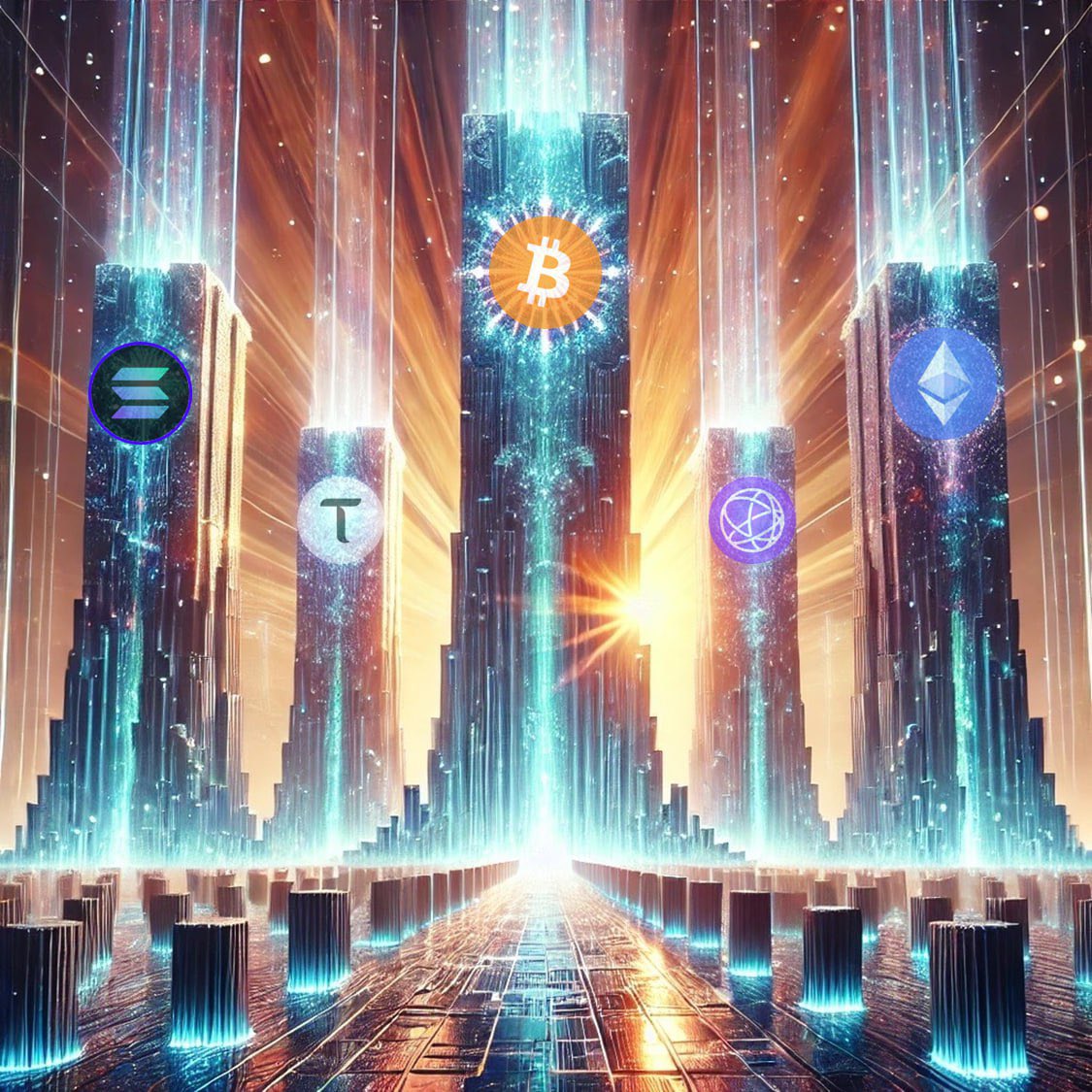In emerging blockchain ecosystems, religious energy is a powerful leading indicator of success.
Well-crafted narratives act like temporal magnets, drawing future resources into the present, making extraordinary outcomes almost self-fulfilling.
In essence, Soros’ reflexivity manifesting in the cryptoeconomy — where belief attracts ideologically driven builders and diamond-handed investors in a self-reinforcing loop, turning imperfect projects into long-term winners.
All that’s needed at first, to spark a new “religion” is a kernel of truth — a North Star that stirs a visceral response, and a new developer sandbox that pushes the boundaries of what’s possible.
For Ethereum, it was the promise of decentralized applications and the advent of smart contracts.
For Solana, it was the vision of a decentralized Nasdaq, delivered through a high-performance, parallelized system.
Today I see two ecosystems brewing with similar religious energy that I once saw in Ethereum and Solana: Bittensor (TAO) and Celestia (TIA).
Bittensor promises a future of decentralized AI. Its permissionless subnet architecture and block reward system programmatically incentivizes the creation of digital commodities for AI applications. The potential? The largest DePIN program ever, which when combined with upcoming smart contracts, could create a full-stack decentralized AI platform (i.e an AI L1).
Celestia promises a future of sovereign applications. Its modular architecture enables fully customizable, natively interoperable rollups that effectively scale with demand. Its data-sampling light nodes unlock unprecedented economies of scale, overcoming the anti-network effects that plague traditional blockchains. The potential? A flourishing ecosystem of composable chains, powering hyper-scale decentralized applications.
Today the hurdle is extremely high for a new ecosystem to breach into the pantheon of generational blockchains which includes Bitcoin, Ethereum, and now Solana. I’m skeptical many more will earn a spot at the top if any. It will likely take another bear market to figure out for sure. But if I had to bet, and I am to be clear, I’m betting on TAO and TIA.
NFA.
Well-crafted narratives act like temporal magnets, drawing future resources into the present, making extraordinary outcomes almost self-fulfilling.
In essence, Soros’ reflexivity manifesting in the cryptoeconomy — where belief attracts ideologically driven builders and diamond-handed investors in a self-reinforcing loop, turning imperfect projects into long-term winners.
All that’s needed at first, to spark a new “religion” is a kernel of truth — a North Star that stirs a visceral response, and a new developer sandbox that pushes the boundaries of what’s possible.
For Ethereum, it was the promise of decentralized applications and the advent of smart contracts.
For Solana, it was the vision of a decentralized Nasdaq, delivered through a high-performance, parallelized system.
Today I see two ecosystems brewing with similar religious energy that I once saw in Ethereum and Solana: Bittensor (TAO) and Celestia (TIA).
Bittensor promises a future of decentralized AI. Its permissionless subnet architecture and block reward system programmatically incentivizes the creation of digital commodities for AI applications. The potential? The largest DePIN program ever, which when combined with upcoming smart contracts, could create a full-stack decentralized AI platform (i.e an AI L1).
Celestia promises a future of sovereign applications. Its modular architecture enables fully customizable, natively interoperable rollups that effectively scale with demand. Its data-sampling light nodes unlock unprecedented economies of scale, overcoming the anti-network effects that plague traditional blockchains. The potential? A flourishing ecosystem of composable chains, powering hyper-scale decentralized applications.
Today the hurdle is extremely high for a new ecosystem to breach into the pantheon of generational blockchains which includes Bitcoin, Ethereum, and now Solana. I’m skeptical many more will earn a spot at the top if any. It will likely take another bear market to figure out for sure. But if I had to bet, and I am to be clear, I’m betting on TAO and TIA.
NFA.

• • •
Missing some Tweet in this thread? You can try to
force a refresh










